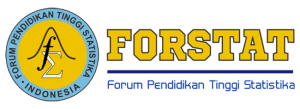Klasifikasi Tutupan Lahan Berdasarkan Random Forest Algorithm Menggunakan Cloud Computing Platform
DOI:
https://doi.org/10.34123/jurnalasks.v14i1.383Keywords:
sustainable development goals, klasifikasi, tutupan lahan, google earth engine, random forestAbstract
Statistik pertanian merupakan salah satu data yang vital di dunia dan memiliki kontribusi besar terhadap pencapaian tujuan program Sustainable Development Goals (SDGs). Dalam SDGs, perhatian terhadap ketahanan pangan difokuskan pada indikator kunci kedua yaitu nol kelaparan (SDG 2). Ketersediaan data tutupan lahan yang akurat diperlukan sebagai data dasar untuk luasan baku sawah yang akan digunakan untuk mengukur tingkat ketahanan pangan. Pemetaan tanaman membutuhkan pemrosesan dan pengelolaan data citra satelit dengan volume yang sangat besar dan tidak terstruktur yang mengarah pada permasalahan Geo Big Data dan menuntut teknologi dan sumber daya baru yang mampu menangani citra satelit dalam jumlah besar. Secara khusus, munculnya sumber daya cloud computing, seperti Google Earth Engine telah mengatasi masalah Geo Big Data ini. Kami menggunakan algoritma Random Forest (RF) pada platform Google Earth Engine (GEE) di Kota Jakarta Utara pada tahun 2019 untuk mengklasifikasikan tutupan lahan. Hasil penelitian menunjukkan bahwa overall accuracy (OA)
Downloads
References
Belgiu, M., & Dr?gu?, L. (2016). Random Forest in Remote Sensing: A Review of Applications and Future Directions. ISPRS Journal of Photogrammetry and Remote Sensing 114, 24–31.
Breiman, L. (2001). Random forests. Machine learning, vol. 45, no. 1, 5–32.
Congalton, R. G., & Green, K. (2019). Assessing the accuracy of remotely sensed data: principles and practices. CRC Press.
FAO. (2016). Food and Agriculture Key To Achieving The 2030 Agenda For Sustainable Development. FAO.
Kussul, N., Lemoine, G., Gallego, F. J., Skakun, S. V., Lavreniuk, M., & Shelestov, A. Y. (2016). Parcel-Based Crop Classification in Ukraine Using Landsat-8 Data and Sentinel-1A Data. IEEE J. Sel. Topics Appl. Earth Observ, Remote Sens., vol. 9, no. 6, 2500-2508.
Mutanga, O., & Kumar, L. (2019). Google Earth Engine Applications. Remote Sens., 11, 591.
Omilola, B., & Robele, S. (2017). The Central Position of Agriculture within the 2030 Agenda for Sustainable Development. Washington, DC: International Food Policy Research Institute.
Parsa, I. M., Dirgahayu, D., Manalu, J., & Carolita, I. (2017). Uji Model Fase Pertumbuhan Padi Berbasis Citra Modis Multiwaktu Di Pulau Lombok. Jurnal Penginderaan Jauh, 51-64.
Ramankutty, N., Mehrabi, Z., Waha, K., Jarvis, L., Kremen, C., Herrero, M., le ba bangwe. (2018). Trends in global agricultural land use: implications for environmental health and food security. Annu. Rev. Plant Biol. 69, 789–815.
Sammut, C., & Webb, G. I. (2017). Encyclopedia of Machine Learning and Data Mining. New York, AS: Springer.
Shelestov, A., Lavreniuk, M., Kussul, N., Novikov, A., & Skakun, S. (2017). Exploring google earth engine platform for big data processing: Classification of multi-temporal satellite imagery for crop mapping. Front. Earth Sci., vol. 5, 17.
Teluguntla, P., & Thenkabail, P. (2018). A 30-m landsat-derived cropland extent product of Australia and China using random forest machine learning algorithm on Google Earth Engine cloud computing platform. ISPRS J. Photogramm. Remote Sens., 325-340.
Thenkabail, P., Lyon, J., & Huete, A. (2019). Advanced Applications in Remote Sensing of Agricultural Crops and Natural Vegetation. Boca Raton: CRC Press.
Viera, A. J., & Garrett, J. M. (2005). Understanding interobserver agreement: The Kappa Statistic. Family Medicine, 37, 360-63.
Visa, S., Ramsay, B., Ralescu, A., & Van Der Knaap, E. (2011). Confusion matrix-based feature selection. MAICS, 710, 120–127.
Xue, J., & Su, B. (2017). Significant Remote Sensing Vegetation Indices: A Review of Developments and Applications. Journal of Sensors, 1–17.
You, J., Li, X., Low, M., Lobell, D., & Ermon, S. (2017). Deep Gaussian Process for Crop Yield Prediction Based on Remote Sensing Data. 31th AAAI Conf. Artificial Intelligence, (dits. 4559–4565).
Zhang, C., Zhang, H., & Zhang, L. (2018). An Automated Paddy Rice Extent Extraction with Time Stacks of Sentinel Data: A Case Study In Jianghan Plain, Hubei, China. 7th Int. Conference Agro-Geoinformatics 8, (dits. 1-6).















